If you’re wondering why you should put oil on steak before grilling, we’ve got the answer for you. Coating your steak with oil before grilling not only helps to prevent sticking, but it also adds flavor and enhances the cooking process.
The oil creates a barrier between the steak and the grill, ensuring that it cooks evenly and stays juicy. Additionally, the oil helps to promote caramelization, which gives the steak a deliciously crispy exterior.
So, don’t forget to oil up your steak before grilling to achieve a mouthwatering and perfectly cooked meal!
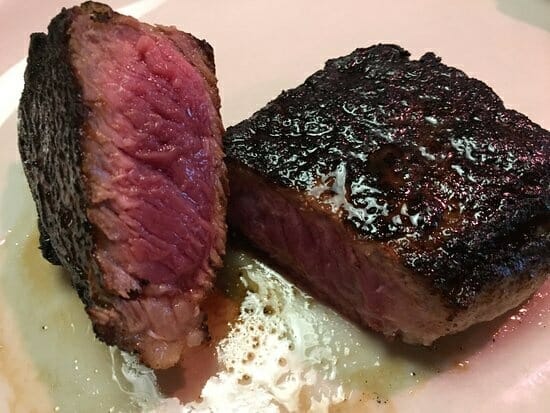
How Oil Enhances the Flavor and Texture of Grilled Steak
Grilled steak is a timeless favorite among meat lovers, and there’s no denying the deliciousness of a perfectly cooked piece of meat.
While the quality of the steak itself plays a significant role in determining its taste and tenderness, the addition of oil during the grilling process can take it to a whole new level.
In this section, we will explore how oil enhances the flavor and texture of grilled steak.
1. Moisture Retention
One of the key ways oil enhances the flavor and texture of grilled steak is by helping to retain moisture. When you coat the steak with oil before grilling, it creates a protective barrier that locks in the natural juices of the meat.
This prevents the steak from drying out during the cooking process, resulting in a more succulent and tender final product.
The oil also acts as a conductor of heat, ensuring that the steak cooks evenly and retains its juiciness throughout. This helps to prevent any dry or overcooked spots on the steak, resulting in a more consistent and enjoyable eating experience.
2. Flavor Infusion
Another significant benefit of using oil when grilling steak is the ability to infuse it with additional flavors. Different types of oils, such as olive oil, can add their unique taste profiles to the meat, enhancing its overall flavor.
You can further enhance the flavor by adding herbs, spices, or garlic to the oil before applying it to the steak.
As the steak cooks on the grill, the oil and added flavors penetrate the meat, imparting a rich and aromatic taste. This infusion of flavors enhances the natural flavors of the steak, elevating it to a new level of deliciousness.
3. Crust Formation
When a steak is grilled, a desirable crust forms on the exterior, adding texture and depth to the overall eating experience. Oil plays a crucial role in the formation of this crust. By coating the steak with oil before grilling, it helps to promote browning and caramelization.
The oil helps to transfer heat to the surface of the meat more effectively, allowing for the development of a flavorful and crispy crust. This crust not only adds texture but also locks in the juices, contributing to a more flavorful and tender steak.
4. Preventing Sticking
Using oil on the grill grates before placing the steak helps to prevent it from sticking. This is especially important when dealing with leaner cuts of steak that have less fat marbling. The oil acts as a lubricant, reducing the chances of the steak sticking to the grates and tearing apart.
By preventing sticking, the oil ensures that the steak retains its shape and maintains its tenderness. It also makes it easier to flip the steak without leaving any delicious bits behind on the grates, ensuring that you get the most out of your grilled steak.
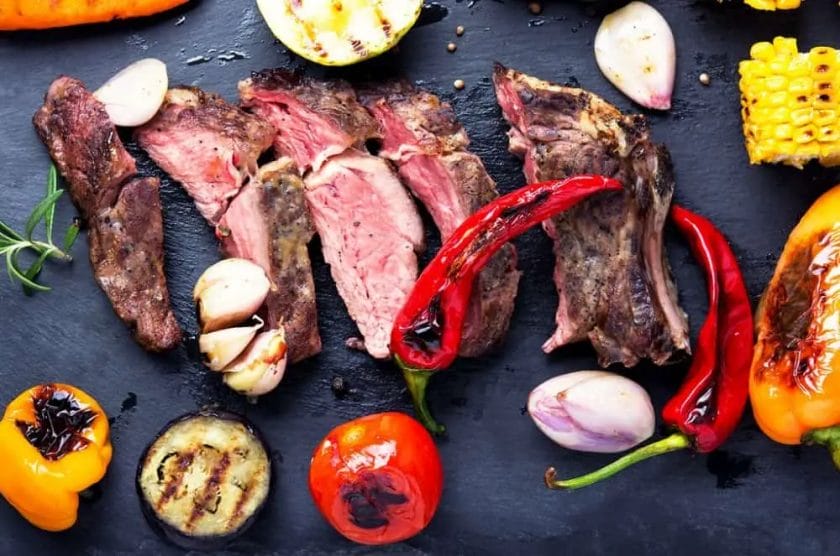
Types of oils to use for grilling steak
When it comes to grilling steak, choosing the right oil can make a significant difference in the taste, texture, and overall flavor of the meat. Different oils have varying smoke points, flavors, and consistencies, which can affect the outcome of your grilled steak.
Here are some of the best types of oils to consider when grilling steak:
1. Olive oil
Olive oil is a popular choice for grilling steak due to its rich flavor and high smoke point. Extra virgin olive oil, with its fruity and robust taste, adds a pleasant depth of flavor to the meat.
It also contains healthy monounsaturated fats that can enhance the juiciness of the steak. However, it’s important to note that olive oil has a lower smoke point compared to other oils, so it’s best suited for medium to medium-high heat grilling.
2. Canola oil
Canola oil is another excellent option for grilling steak. It has a neutral flavor and a high smoke point, allowing you to achieve a nice sear without the oil burning.
Canola oil is also low in saturated fat and high in omega-3 fatty acids, making it a healthier choice. It works well for high-heat grilling and is versatile enough to be used for other cooking methods too.
3. Grapeseed oil
Grapeseed oil is a popular choice among professional chefs for grilling steak. It has a mild flavor that won’t overpower the natural taste of the meat.
Grapeseed oil has a high smoke point, making it suitable for high-temperature grilling. It also contains heart-healthy fats and vitamin E, which adds nutritional value to your grilled steak.
4. Avocado oil
Avocado oil is a versatile oil that works well for grilling steak. It has a mild, buttery flavor that complements the meat without overwhelming it.
Avocado oil has a high smoke point, allowing you to achieve a nice sear and caramelization on the steak. It is also rich in monounsaturated fats and vitamin E, making it a healthy choice for grilling.
5. Peanut oil
Peanut oil is a popular oil for grilling steak due to its high smoke point and neutral flavor. It can withstand high temperatures without breaking down or imparting any taste onto the meat.
Peanut oil also has a long shelf life, making it a convenient option for grilling enthusiasts. However, individuals with peanut allergies should avoid using this oil.
6. Coconut oil
Coconut oil can add a unique flavor profile to your grilled steak. It has a slightly sweet and nutty taste that can enhance the overall taste of the meat.
Coconut oil has a moderately high smoke point, making it suitable for medium to medium-high heat grilling. It is also rich in healthy fats and can add a tropical twist to your steak.
When choosing an oil for grilling steak, consider the smoke point, flavor, and nutritional benefits. Experiment with different oils to find the one that best suits your taste preferences and cooking methods.
Remember to use the oil sparingly and apply it to the steak just before grilling for optimal results.
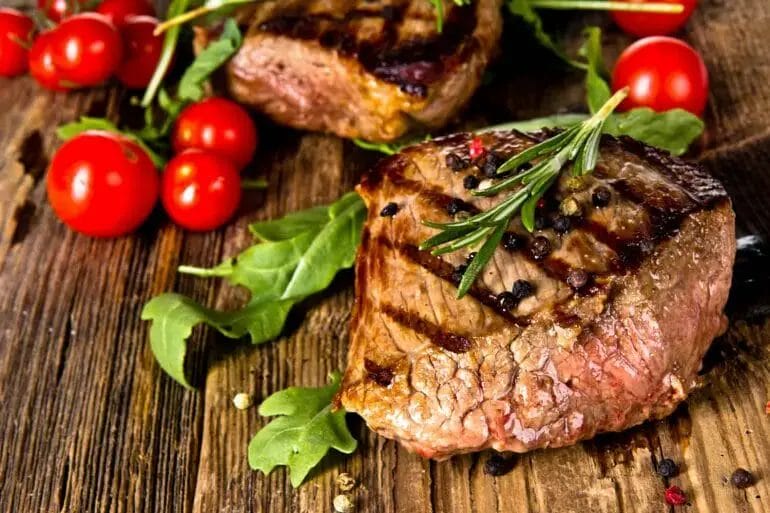
Tips for properly applying oil to steak before grilling
Grilling the perfect steak is an art that requires attention to detail at every step, including the preparation process.
One crucial step in preparing a steak for grilling is properly applying oil to enhance flavor and ensure a juicy, tender result. In this section, we will discuss some valuable tips for properly applying oil to steak before grilling.
Choose the right oil
The first step to properly applying oil to steak is choosing the right oil. It is recommended to use an oil with a high smoke point, such as canola oil, vegetable oil, or avocado oil.
These oils can withstand high temperatures without breaking down, allowing you to achieve a nice sear without the oil burning.
Season the steak first
Before applying oil, ensure that you have properly seasoned your steak with salt, pepper, and any desired spices or herbs. This will help enhance the flavor of the steak and create a delicious crust when grilled.
Use a brush or your hands
When it comes to applying oil to the steak, you have a few options. One common method is to use a brush to evenly coat the steak with oil. This allows for precise application and minimizes the risk of oil pooling in certain areas.
Alternatively, you can also use your hands to rub the oil onto the steak, ensuring that it is evenly distributed.
Whichever method you choose, make sure to apply a thin, even layer of oil. Avoid using excessive amounts of oil, as it can lead to flare-ups on the grill and a greasy final result.
Let the oil soak in
After applying the oil, it’s important to let it soak into the steak for a few minutes. This allows the flavors to meld together and ensures that the oil is fully absorbed by the meat.
Preheat the grill
While the oil is soaking into the steak, take the time to preheat your grill. It’s important to have a hot grill before placing the steak on it. The high heat helps create a nice sear and locks in the juices.
Cook the steak to perfection
Once the grill is preheated and the oil has had time to soak into the steak, it’s time to cook it to perfection. Follow your preferred grilling method and cook the steak to your desired level of doneness. Remember to use a meat thermometer to ensure accurate results.
Allow the steak to rest
After grilling, it’s crucial to allow the steak to rest for a few minutes before cutting into it. This allows the juices to redistribute throughout the meat, resulting in a tender and flavorful steak.
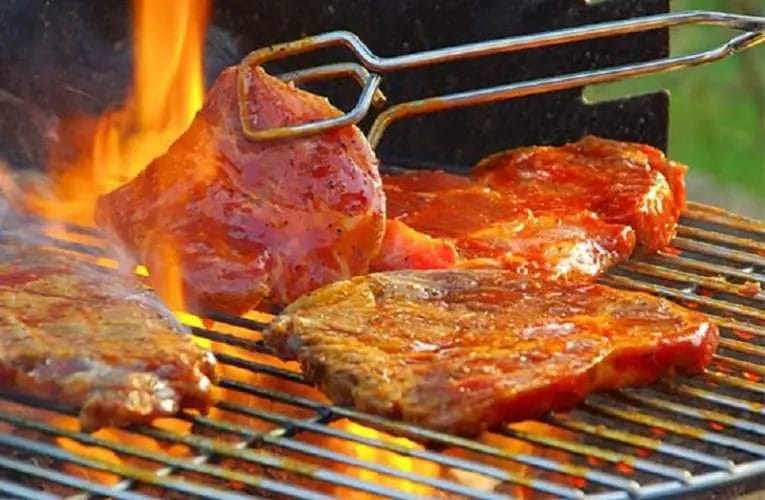
Common Misconceptions About Using Oil on Steak for Grilling
Grilling a delicious, juicy steak is a staple of outdoor cooking. However, there are many misconceptions surrounding the use of oil on steak for grilling. In this section, we will debunk some of these misconceptions and shed light on the best practices for using oil on steak. So, let’s dive in!
1. Myth: Oiling the Steak Before Grilling Makes It Juicier
One common misconception is that oiling the steak before grilling helps retain its juices, making it juicier. However, this is not entirely true. Oil does provide some moisture and can help prevent the steak from sticking to the grill, but it doesn’t magically make the steak juicier.
The juiciness of the steak primarily depends on the quality and cut of meat, as well as the cooking method and temperature. To achieve a juicy steak, focus on selecting a well-marbled cut and cooking it to the desired doneness.
2. Myth: Using a High Smoke Point Oil is a Must
Another misconception is that you should only use oils with high smoke points, such as canola or grapeseed oil, for grilling steak. While oils with higher smoke points are suitable for high-heat cooking methods like stir-frying, grilling steak doesn’t require oil to reach such high temperatures.
You can use a variety of oils with lower smoke points, such as olive oil or even butter, to add flavor and prevent sticking. Just make sure to brush a thin layer of oil onto the steak and the grill grates before cooking.
3. Myth: Oil Enhances the Grill Marks on Steak
It’s a common belief that oiling the steak before grilling helps create those beautiful grill marks we all love. However, grill marks are primarily formed due to the direct contact between the meat and the hot grill grates, not the oil.
While oil can aid in preventing the steak from sticking to the grates, it doesn’t play a significant role in creating grill marks. To achieve well-defined grill marks, ensure that your grill grates are preheated and clean before cooking the steak.
4. Myth: More Oil Equals Better Results
Some people believe that using more oil on steak yields better results, such as a crispier crust or more flavor. However, excessive oil can lead to flare-ups and potentially cause the steak to become excessively greasy.
Instead of drenching the steak in oil, lightly brush or drizzle a small amount of oil on both sides before grilling. This will be sufficient to prevent sticking and enhance the flavor without overwhelming the meat.
5. Myth: Oiling the Steak Before Seasoning Ruins the Flavor
There is a misconception that oiling the steak before applying seasoning can interfere with the flavor. However, oil acts as a carrier for the seasoning, helping it adhere to the meat and enhancing its overall taste.
Before grilling, brush the steak with oil and then season it generously with salt, pepper, and any other desired seasonings. This will create a delicious crust and contribute to a flavorful end result.
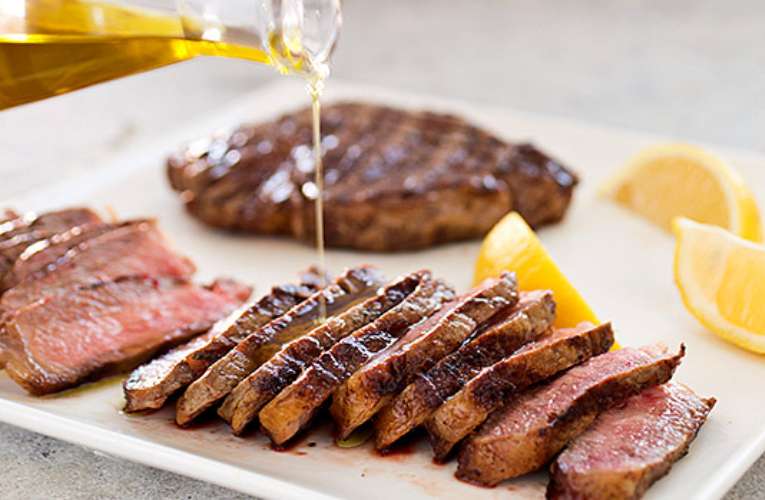
FAQs
Why should I put oil on steak before grilling?
Applying oil to steak before grilling helps to prevent sticking to the grill and promotes a flavorful crust. The oil also helps to distribute heat evenly and assists in caramelization, resulting in a juicier and more tender steak.
Conclusion
Adding oil to steak before grilling serves multiple purposes. Firstly, it helps to prevent the steak from sticking to the grill, ensuring a smooth and even cooking process.
Secondly, the oil helps to create a delicious, crispy crust on the outside of the steak, enhancing the overall flavor and texture. Additionally, the oil acts as a barrier, sealing in the natural juices of the meat and keeping it moist and tender.
It also helps to conduct heat evenly, resulting in a perfectly grilled steak. Overall, applying oil to steak before grilling is a simple yet effective technique that enhances the taste and quality of the final dish.

